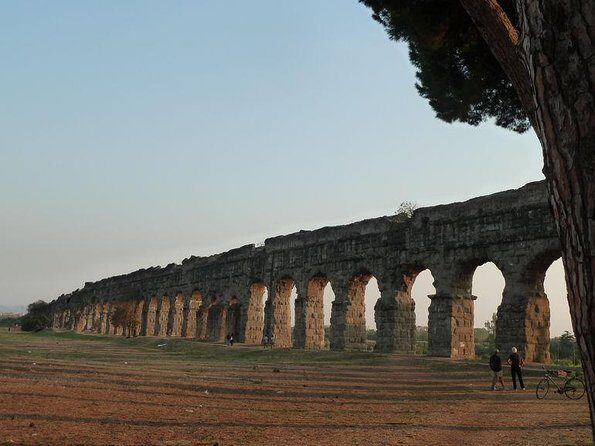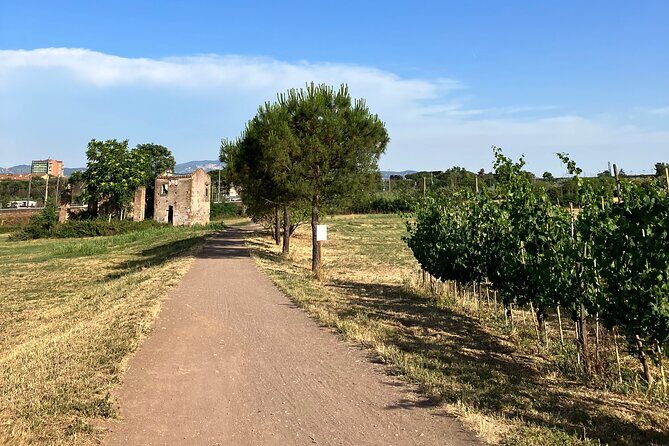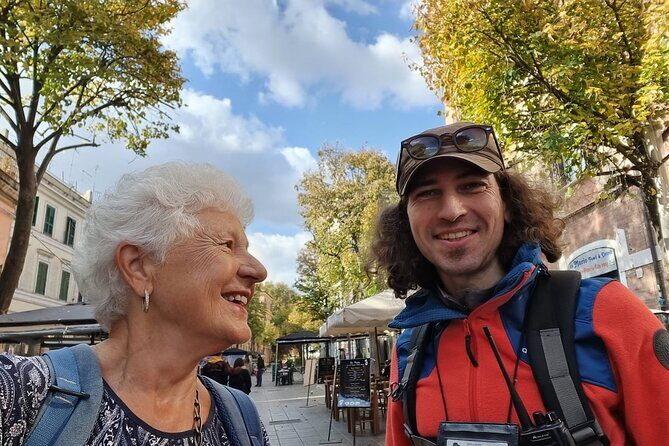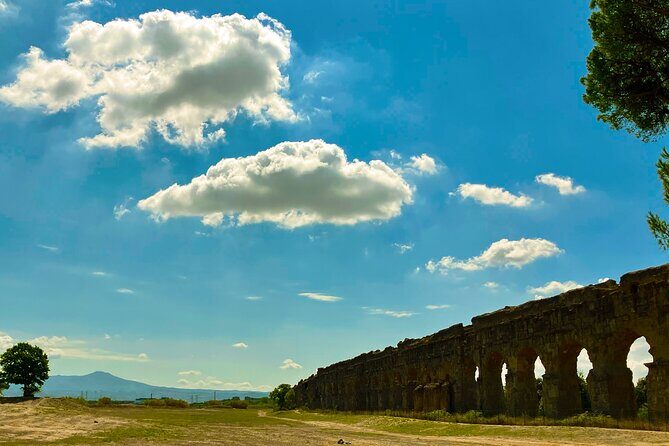Exploring Rome’s Aqueducts on Foot: A Practical, Authentic Urban Hike
If you’re looking to escape the crowds and get a real taste of Rome’s ancient engineering, this Urban Hike to the Aqueduct Park might be just what you need. For about $35.50 per person, you’ll join a small group—usually about 15 people or fewer—for roughly 3 hours of walking through neighborhoods and parks that tell stories of Rome’s impressive aqueduct system. The tour starts at a lively, local neighborhood called Pigneto, known for its trendy cafes and morning markets, and winds through historic aqueduct sites and lush parks, ending near a metro station for easy onward travel.
What we love most about this experience is how it combines history, nature, and authentic local life all in one walk. You’ll appreciate the chance to see impressive ancient structures up close, with a guide who shares stories and insights beyond what you’ll find in a guidebook. Plus, the walk offers refreshing views away from busy tourist hotspots, making it a great way to relax and explore like a local.
One possible consideration is that this is a moderate physical activity, involving walking over uneven terrain and some uphill sections, so it’s best suited for travelers who are comfortable with a bit of a workout. The tour’s small size and flexible itinerary make it ideal for those who want a personalized experience rather than a large-group bus tour, perfect for history enthusiasts and active travelers alike.
This tour is especially well-suited for those who enjoy authentic, off-the-beaten-path experiences, and who want to learn about Rome’s engineering marvels while enjoying outdoor scenery and local neighborhoods.
This experience made our article of Our 12 Favorite Rome Hiking And Trekking Tours.
Key Points

- Authentic Neighborhood Start: Begins in the trendy Pigneto area, offering a local flavor away from tourist crowds.
- Historical Focus: Highlights Rome’s ancient aqueducts, with detailed explanations about their construction and significance.
- Scenic Parks and Views: Passes through parks like Parco degli Acquedotti, providing stunning vistas of ancient structures amid lush greenery.
- Small Group Experience: Limited to 15 travelers, ensuring a more personal and engaging guided walk.
- Physical Activity Level: Moderate, suitable for those comfortable with walking and uneven terrain.
- Convenient Ending Point: Finishes near a metro station for easy access back to central Rome or your accommodation.
In-Depth Review: Walking Through Rome’s Ancient Engineering

Love the outdoors? Here are other hiking experiences we've covered in Rome
The Beginning in Pigneto: Local Flavor and First Impressions
The tour kicks off in Pigneto, a neighborhood that offers a more bohemian vibe compared to the more famous Roman sights. Here, you’ll find the local morning market and cozy coffee spots—perfect for feeling like you’re a resident rather than a tourist. The walk starts at 8:30 am, a good time to beat the larger crowds and enjoy the peaceful morning atmosphere.
This neighborhood sets the tone for the tour: relaxed, genuine, and full of character. The guide, often someone like Sal (mentioned in reviews), makes a point of sharing fun anecdotes about the local scene, making the first 15 minutes fly by. We found this a refreshing way to begin the day, as it contrasts with the busy, more commercial parts of Rome.
Visiting Acquedotto Felice: A Marvel of Ancient Engineering
From Pigneto, the group heads toward the Acquedotto Felice, an impressive aqueduct built in the 16th century. Standing beneath or near these structures, we felt a tangible connection to Rome’s ingenuity—their ability to transport water across miles using gravity. The guide explains how the aqueduct’s arches and channels worked, giving us a clearer picture of Roman engineering skills.
This stop is free of admission fees, but the real value is in the guided commentary. We loved the way the guide described the aqueduct’s sources, construction challenges, and historical importance. As one review mentions, the enthusiasm of Sal made the experience especially engaging, turning what might seem a simple stone structure into a lively story of Roman innovation.
Porta Furba: A Gate and a Fountain
Next, the tour passes through Porta Furba, one of Rome’s main entrance gates. Here, you get a glimpse of the fountain of Pope Clement XII, which utilized water from the Felice aqueduct. The fountain is a charming stop that combines architecture and history—a perfect moment to appreciate how aqueducts shaped everyday life.
The guide provides a succinct explanation of how these structures fed the city’s water supply, linking ancient Rome to the modern cityscape. It’s a reminder that these aqueducts weren’t just engineering feats—they impacted urban development and daily routines.
Parco degli Acquedotti: A Living Museum of Ancient Rome
Our next stop is Parco degli Acquedotti, one of the highlights of the tour. With its sprawling, open landscape dotted with tall stone arches, it’s like stepping into a living museum. The park offers some of the best views of the aqueducts, with the countryside and city skyline in the background.
The guide points out key features and explains the history behind each structure, making the park a perfect blend of nature and history. As one reviewer notes, the guide’s knowledge and enthusiasm elevate this part of the walk, making it both educational and visually stunning.
Tor Fiscale Park: Nature, Ruins, and More Aqueducts
The final stretch takes you through Tor Fiscale Park, another scenic area full of nature and ancient ruins. Here, the aqueducts continue to dominate the landscape, with parts of the ancient waterworks still standing. The guide discusses how these structures were used, their importance in supporting Rome’s population, and their resilience over centuries.
Many travelers find this part of the tour particularly rewarding, as it combines relaxing green spaces with historical intrigue. It’s a fitting conclusion to a walk that beautifully illustrates Rome’s engineering legacy.
Practical Details and Travel Tips
The tour wraps up near Via Lemonia, close to the Giulio Agricola metro station on the A-line. From here, you can easily return to central Rome or continue exploring. The small group size makes for a more personalized experience, and the mobile ticket system ensures smooth check-in.
Since the tour involves walking over uneven terrain and some inclines, it’s best suited for travelers with moderate physical fitness. It’s a great way to combine gentle exercise with learning, but those with mobility issues might want to consider other options.
The cost of $35.49 is quite reasonable given the depth of insight, the expert guidance, and the opportunity to see hidden parts of Rome few travelers encounter. It’s a value-packed experience for history buffs or active adventurers who want a different perspective on Rome’s ancient past.
Who Would Love This Tour?

This hike suits anyone curious about Rome’s engineering achievements and hidden parks. It’s perfect for those who prefer walking and exploring over bus rides and large groups. If you enjoy small-group tours with knowledgeable guides sharing stories beyond the usual tourist fare, you’ll find this experience rewarding. It’s especially good for active travelers who want a moderate workout coupled with education and scenic views.
Travelers who appreciate authentic local neighborhoods and want to escape the crowds at the Colosseum or Vatican will find this tour a refreshing change. History lovers will enjoy learning about specific aqueduct structures and their role in Rome’s development. The inclusion of parks and nature also makes it suitable for those who enjoy outdoor scenery combined with historical context.
FAQ: Practical Questions About the Aqueduct Park Urban Hike

How long is the tour?
It lasts approximately 3 hours, covering a manageable distance that allows for plenty of stops and explanations.
Where does the tour start and end?
It begins in Pigneto and ends near Via Lemonia, close to the Giulio Agricola metro station on the A-line, offering easy access back to central Rome.
What is the price of the tour?
The tour costs about $35.49 per person, which includes guided commentary and access to outdoor sites—good value for a small-group experience.
Is this tour suitable for children or less active travelers?
It’s best for those with moderate physical fitness who are comfortable walking on uneven terrain for around three hours. Younger children might enjoy it if they’re used to walking.
How many people are in the group?
Maximum of 15 travelers, providing a more intimate and relaxed atmosphere.
What should I wear or bring?
Comfortable walking shoes are essential. You might also want to bring water, sunscreen, and a hat, especially if the weather is sunny.
Is this tour accessible by public transportation?
Yes, the ending point is near a metro station, making it easy to return to other parts of Rome.
Can I cancel if my plans change?
Yes, cancellations are free if made at least 24 hours in advance. No refunds for last-minute cancellations.
Are tickets included?
The tour is a mobile ticket booking, and the stops themselves are free of charge, with the guide providing all necessary explanations.
This Urban Hike to the Aqueduct Park in Rome offers a refreshing, engaging way to see a different side of the Eternal City. It’s a well-balanced mix of history, outdoor scenery, and local life, ideal for travelers who want to combine outdoor activity with cultural insight. Whether you’re a history buff, a nature lover, or simply seeking an authentic Roman experience away from tourist crowds, this tour delivers a memorable, meaningful walk through time and nature.
More Hiking & Trekking Tours in Rome
- Caffarella Park: Rome’s Secret Urban Hiking Paradise
- 3 Hours Hiking On The Via Sacra Romana Between Lakes Nature And Pasta
- Trekking Rome and Roman Castles: Private Guided Excursions
- Hiking the Highest Waterfall in EU Hike, Rome
- Rome: Mini hike to the ancient Parco degli Acquedotti
- Rome: Hike along the ancient Appian Way
More Tour Reviews in Rome
- Rome: Vatican Museum & Sistine Chapel Skip-the-Line Tickets
- Pantheon Private Guided Tour – Rome’s Iconic Ancient Temple
- Hidden Rome Tour: Interactive Walking Quest
- Church of Jesus Christ of Latter Day Saints – Visit Mormon Temple in Rome
- Private transfer from Rome to Sorrento
- Rome: Pub Crawl & Ultimate Party Tour
More Rome experiences we've covered
- Which Rome Bike Tours To Choose? We Rank The 15 Best
- Top 15 3-Hour Tours In Rome
- Rome’s 15 Top Wine Tours
- Our Picks For The 5 Best Vegan & Vegetarian Tours In Rome
- Our 15 Favorite Rome Lunch Experiences
- The 15 Most Popular Food Tours In Rome
- Rome’s 15 Top Dinner Experiences (With Prices)
- 15 Fantastic Dining Experiences In Rome
- 4 Best Craft Beer Tours In Rome
- Rome’s 3 Best Coffee Tours: Which To Choose?
- 15 Top Workshops & Classes In Rome (With Reviews & Prices)
- 15 Most Highly Rated Walking Tours In Rome
